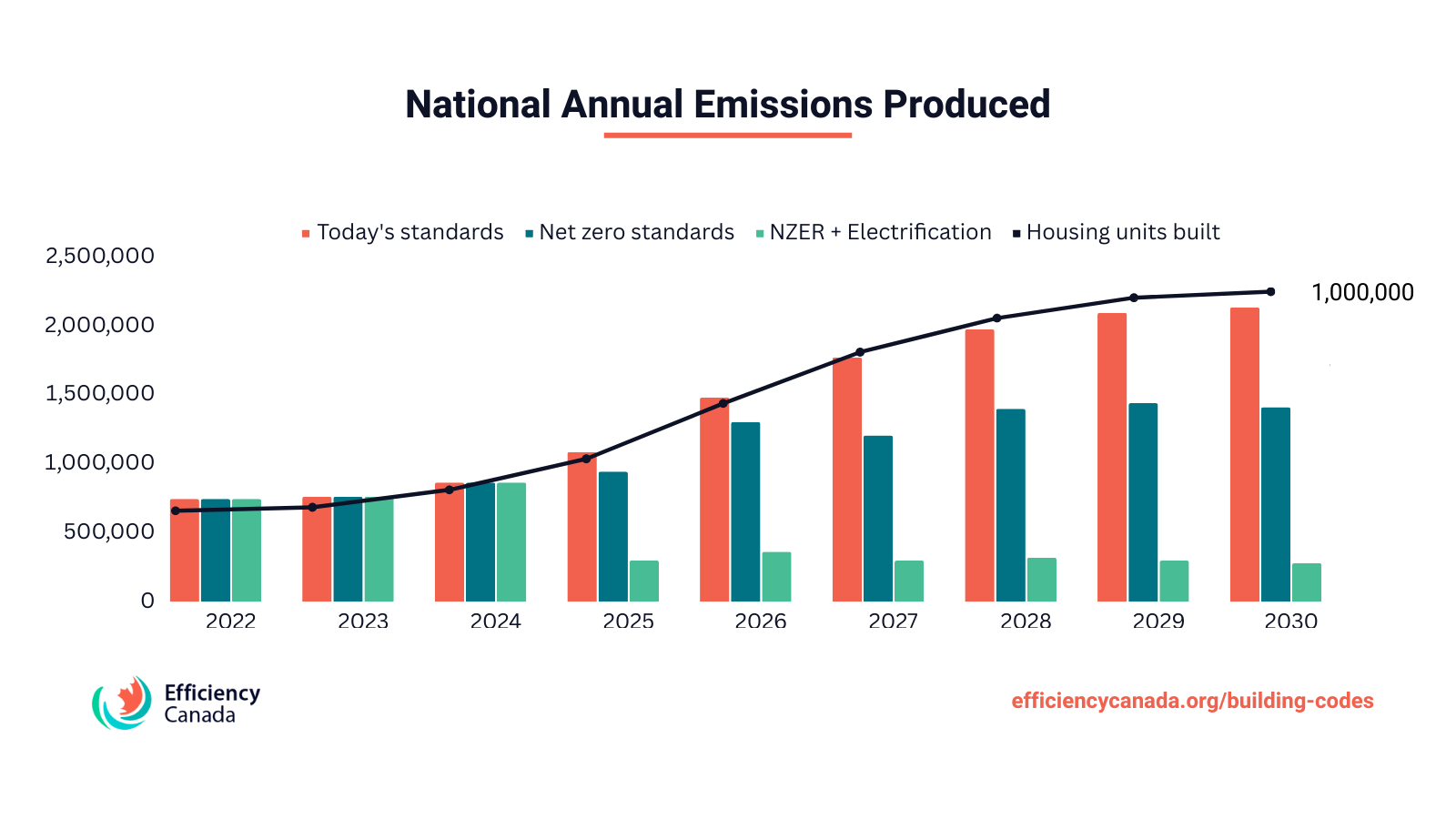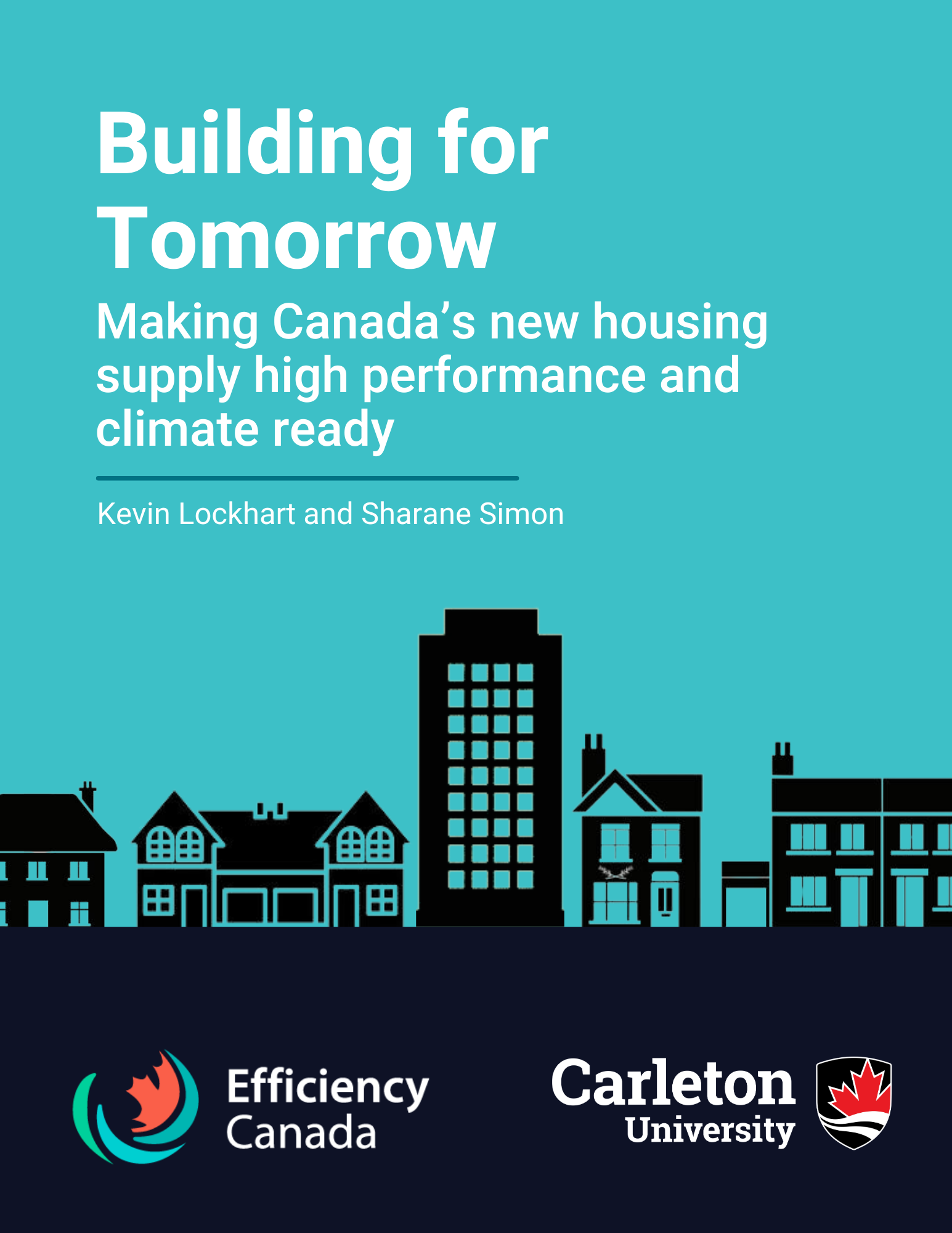Building for Tomorrow
Making Canada’s new housing supply high performance and climate readyBuilding energy use is the third largest source of greenhouse gas emissions in Canada. New buildings constructed today will last for half a century or more. If we build 5.8 million units using today’s building standards, it will lock in approximately 12.9 megatonnes of greenhouse gas emissions each year those buildings are in operation.
New research from Efficiency Canada shows that how we build matters. It studies the impact of building codes during this anticipated increase in new housing construction. The findings highlight a unique opportunity to tackle the twin challenges of housing and climate while increasing household affordability.
Our key findings on housing and climate
Share the findings on social media with the hashtag #HousingandClimate
Key Finding #1: If all provinces adopt the most ambitious tier of Canada’s building codes — net zero energy ready standard — it will produce 20% fewer emissions per year.

Provinces and territories have agreed to reach net-zero energy-ready standard by 2030. A building measuring up to this standard is energy efficient enough to meet its annual energy needs with the addition of on-site renewables or off-site clean energy.
However, adoption of the tiered codes has been limited. As of yet, only British Columbia has adopted and implemented an upper tier (tier 3) without restrictions.
Key Finding #2: If we reach net zero energy ready standard by 2030, it could reduce household spending by $3 billion per year.

Both building owners and occupants will be able to achieve long-term affordability through lower energy and maintenance costs. Well-designed, insulated and air-sealed homes also protect people from extreme heat, forest fire smoke and other serious weather events associated with climate change.
Key Finding #3: If we build to a net zero energy ready standard and implement full electrification starting in 2025, Canada can reduce emissions by ⅔ and reduce household spending by $5 billion per year.

Building electrification—using electricity or other zero-carbon fuels for space and water heating and cooking—offers an emissions-neutral path for newly built residential housing. Electrification can also improve comfort and air quality leading to greater health for building occupants.

In addition to the buildings themselves, we’ll need to construct new supply chains, skilled workforces and critically a retrofit economy to support the transition.
Provincial and territorial governments have the opportunity to address the housing and climate crises right now. By adopting the highest tier of Canada’s Building Codes, they can set every new building on the path to net-zero emissions.
![[Final Version] Housing and Climate visualization (1)](https://www.efficiencycanada.org/wp-content/uploads/2023/11/Final-Version-Housing-and-Climate-visualization-1.png)
Download and share full infographic

Read the full report
We can build them to today’s standard or we can move upward through the tiers of the 2020 National Building Code and National Energy Code for Buildings to reach the net zero energy-ready standard by 2030.
Going a step further, if we build homes to a net-zero energy-ready standard by 2030 and implement full electrification of all new housing units starting in 2025, we could reduce emissions by 2/3rds from today’s standards.

Receive information and tools
Never miss an update on building codes and gain access to tools that will help accelerate change in your community.

